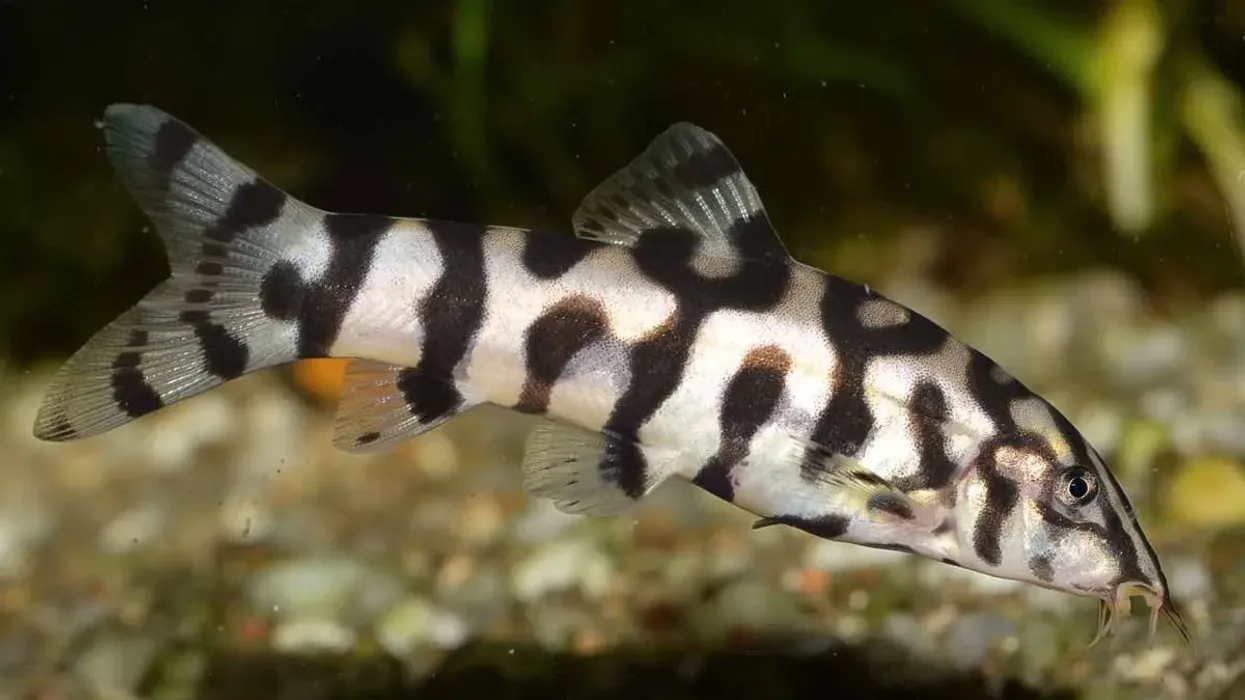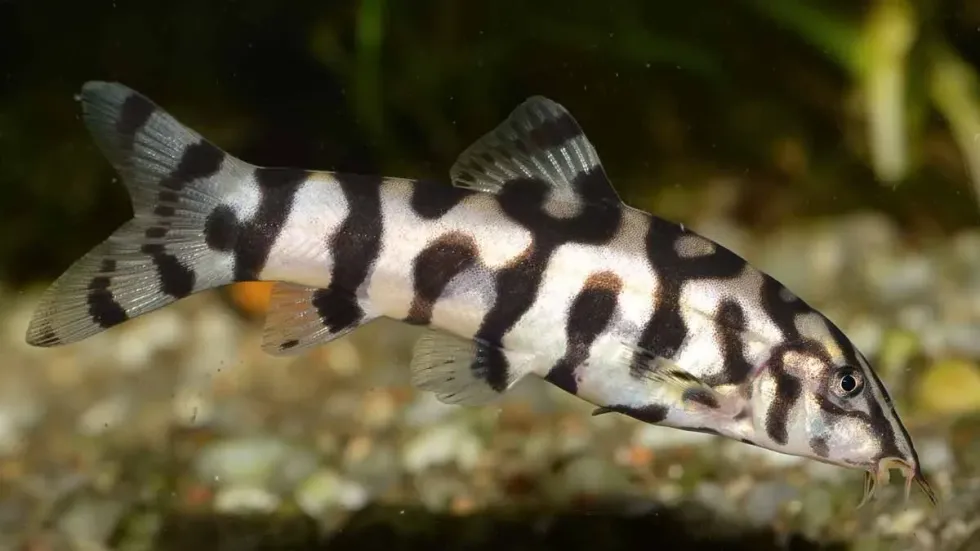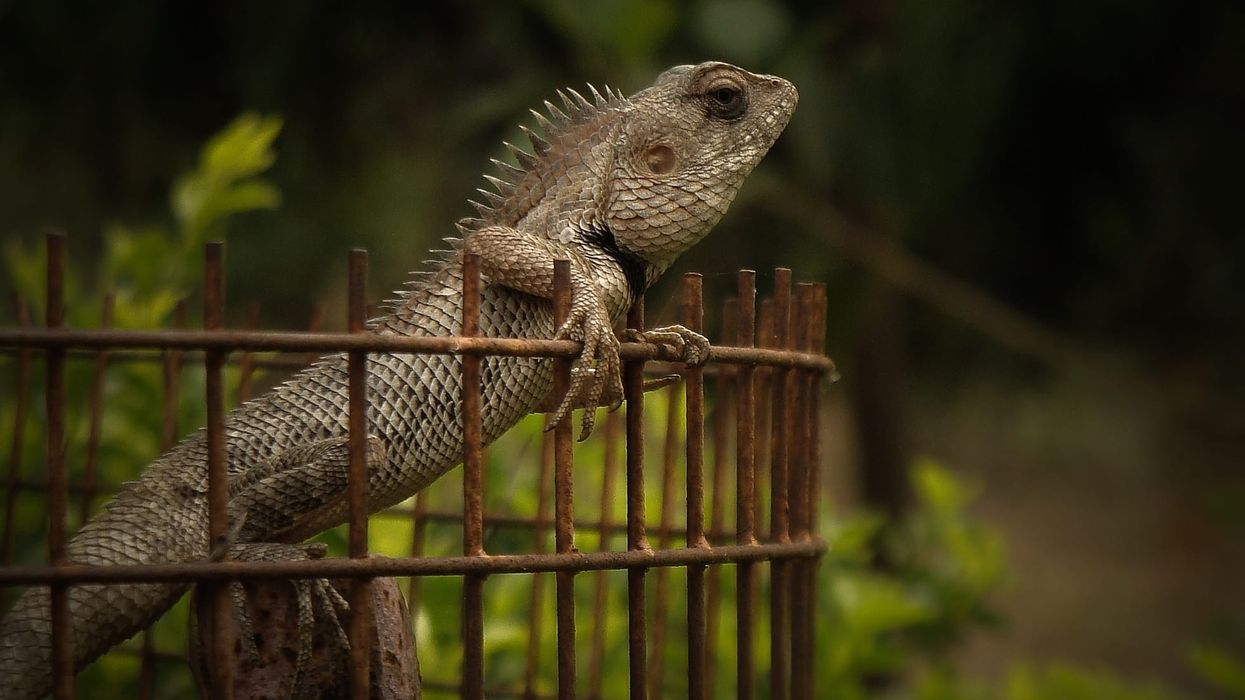Constituting a large group of organisms with more than 1200 species under them is the superfamily of loaches (scientific name Cobitidae). They are freshwater fishes.
Carl Linnaeus (commonly known as the father of modern taxonomy) described the genus Cobitis, which led to the naming of the super family of loaches, calling them Cobitidae. However, initially, the term was used by Aristotle, and thus he is often considered the founding father of the term.
He used the term to describe small burrowing fishes. There is a wide variety of loach species that can be found across the world such as clown loach, kuhli loach (pangio kuhlii), loach botia, pond loach.
Read along to discover some interesting clown loach facts, botia loach facts, and pond loach facts as well as various other loach species. Thereafter, do check out our other articles on eel facts and snapping turtle facts.
Loach Interesting Facts
What type of animal is a loach?
Loaches (scientific name Cobitidae) are a group of fishes belonging to the family Cobitidae. Cobitidae themselves are considered under the order Cypriniformes that constitute the largest vertebrates.
These fishes are found in freshwater (that naturally occurring water bodies with very low concentrations of salt, mostly dissolved forms), and they are bottom-dwelling, found on the beds of the water bodies (benthic zone). Many fish of this species have an eel-like appearance.
What class of animal does a loach belong to?
Loaches belong to the class Actinopterygii. Belonging to this class, the organisms placed here are basically known as ray-finned fishes.
How many loaches are there in the world?
Loaches are categorized amongst the most diverse group of fishes. According to the present report, about 1200-1249 species of loaches are known to be inhabitants on Earth including clown loach, kuhli loach.
Where does a loach live?
The loaches are distributed along with a broad range of geographical regions throughout the domains of Europe, Central and Southeast Asia, and Northern Africa. They can thrive well in a water tank as well as aquariums.
Though, when being kept in an aquarium, they must preferably be kept with other loach fishes as their tankmates. Their size varies significantly as per the respective species. They do not prefer plants around their habitat and in most cases their habitat will be around regions where plants are not present.
What is a loach's habitat?
Many species of loach fish can be located in a wide range of habitats, including the highlands as well as the lowlands. They are found in rocky mountains and streams at high elevations.
A number of species under loaches are known to burrow in the sand or inhabit riverbeds in broad and flat terrain. And then there are certain families adapted to life in caves as well.
Many species like clown loach, kuhli loach (Pangio kuhlii), loach botia, and pond loach thrive well in aquariums as well as any shallow water body. They get along well with other loaches as their tankmates.
Who do loaches live with?
Loaches are known to flock together. A large number of species under loaches often thrive in schools. In fact, when coexisting in a group they are quite peaceful with the other inhabitants as their tankmates. The size of the aquarium or water tank required depends on the species of the loach and its size.
How long does a loach live?
The average lifespan of different species under loaches is about 3-14 years.
How do they reproduce?
Breeding loaches can be a very difficult task as a lot of things have to be considered. These loaches are known to live communally, so the more they live in a company, the better the chance of a female spawning. Kuhli loach reaches sexual maturity at two years old.
What is their conservation status?
The conservation status of loaches ranges from 'Least Concerned' to 'Endangered'. As more than 1200 species are located under these organisms, the population is highly variant. However, the number of endangered species is relatively less. Though not dangerously threatened the population is declining slowly, owing mostly to loss of habitat or overfishing practices.
Loach Fun Facts
What do Loaches look like?
With more than 1200 species under them, a large amount of variation is seen in the anatomy of loaches, and it is difficult to categorize them as a whole based on their morphology. Typically these fishes possess small cycloid scales.
Though they have varying shapes, often a number of them have elongated and narrow bodies with about four to six pairs of barbels (which are quite similar to whiskers) around their mouth. Some species, such as Cobitis taenia, have sharp ships under the eyes.
The range in length is usually about 1-20 in. Loaches come in a broad range of colors; pale orange with black spots.
Bands of gold and black, shades of yellow with patterned patches are a few to name. Many fish of this species have an eel-like appearance.
How cute are they?
Available in vibrant patterns and colors, the loaches are quite fascinating and magnificent to look at.
How do they communicate?
When put together, loaches can communicate with each other by gathering. Once they gather, they swim around and appear happy. They like to eat larvae that are formed under the water.
How big is a loach?
The loaches range from tiny species such as Pangio Longimanus (pangio kuhlii), with an average height of about an inch to the Leptobotia elongata that are approximately 20 in long.
How fast can a loach swim?
Loaches are really small and can swim very fast owing to their lightweight body. However, they have less stamina and can’t swim fast for a long time.
How much does a loach weigh?
The average weight of loaches ranges between 0.3-6.6 lb.
What are their male and female names of the species?
There are no specific names allotted to the members of loaches, on the basis of their gender. The male members of the species are usually referred to as male loach while females are referred to as female loach.
What would you call a baby loach?
The babies of loaches are referred to as fry, juvenile, or offspring.
What do they eat?
Loaches are bottom-dwelling (found on bed/bottom of water bodies) and omnivorous organisms; that is they feed on both flesh as well as plants. These fish feed on invertebrates like worms, see weeds, as well larvae of other organisms.
Are they dangerous?
No, loaches do not pose any threat to human populations. In fact these are a species of gentle and docile fishes; particularly when they coexist in any habitat with the school of their own populations. However, when inhabiting alone they tend to take on an aggressive approach to other fishes.
Would they make a good pet?
A wide range of loaches such as horsehead loach, yo yo Loach, clown and Kulhi Loach (to name a few) make excellent options for aquariums. Loaches are an active and gentle group of scavengers. These fishes are generally focused on their bottom niches and tidbits of food.
Loaches are also available in beautiful, vibrant, and fascinating colors. These fishes definitely add elegance to aquariums, and hence a number of species under loaches make wonderful pets. They are likely to become aggressive fish when kept alone for a long time.
Did you know...
A number of species of loaches possess defense mechanisms such as sharp barbs around their eyes. Due to their elongated and large sizes, clown loaches are preferable for tanks as large as 55 gallons or more.
Horsehead loaches are popularly known to hide in substrates with their eyes protruding to watch out for prey or predators.
The Misgurnus anguillicaudatus species of loaches adapt and change under barometric pressure.
Do loaches attack other fish?
As loaches include a variety of species under them, different types of temperament is often observed. However, they are generally docile animals.
Since most loaches are known to flock together, they remain calm and don't attack other fishes and animals. But in case of solitude they tend to be aggressive. For instance the clown loach, though usually calm, can be aggressive and attack other fishes, when living alone and not with their group.
Since a large number of species under loaches are commercially available for aquariums, it is advised to own these species in alter a group of two or three fishes.
Different types of loach fish
Cobitoidea, a superfamily with about 1200 species, rates amongst the largest families in the fish kingdom. Some of the popular species includes these below.
Zebra loach: scientifically known as the Botia striata, is popularly recognized by vertical bands of black and gold patterns on their bodies. These are one of the smallest categories of fish under loaches. Zebra loach or also known as golden zebra loach, are peaceful and docile species of pisces.
Clown loach: commonly known as tiger loach, these are a group of agile fishes and are vibrantly toned. They usually come in orange colors with patches of black (a color similar to that of tigers). The clown loaches mature at faster paces, growing as long as 12 inches. These fishes usually move in flocks.
Yo Yo loach: these groups of fishes under loaches have an amusing pattern on their body which is, in fact solely responsible for their interesting name. The body of these fishes are characteristically marked with shapes similar to Y and O as well as their continuous bobbing movements led to the fishes being named as YoYo loach.
And proudly sporting their names, these loaches are quite an active group of fishes.
Kuhli loach: are scientifically known as Pangio kuhlii. These fishes behave as nocturnal, as they are comparatively more active at night. Whereas in Broad daylight, these loaches are generally found cozily lazy around in dark corners. Kuhli Loach has an elongated body (like that of an eel) marked with dark bands.
Here at Kidadl, we have carefully created lots of interesting family-friendly animal facts for everyone to discover! You can even occupy yourself at home by drawing one on our Pond loach coloring pages.









